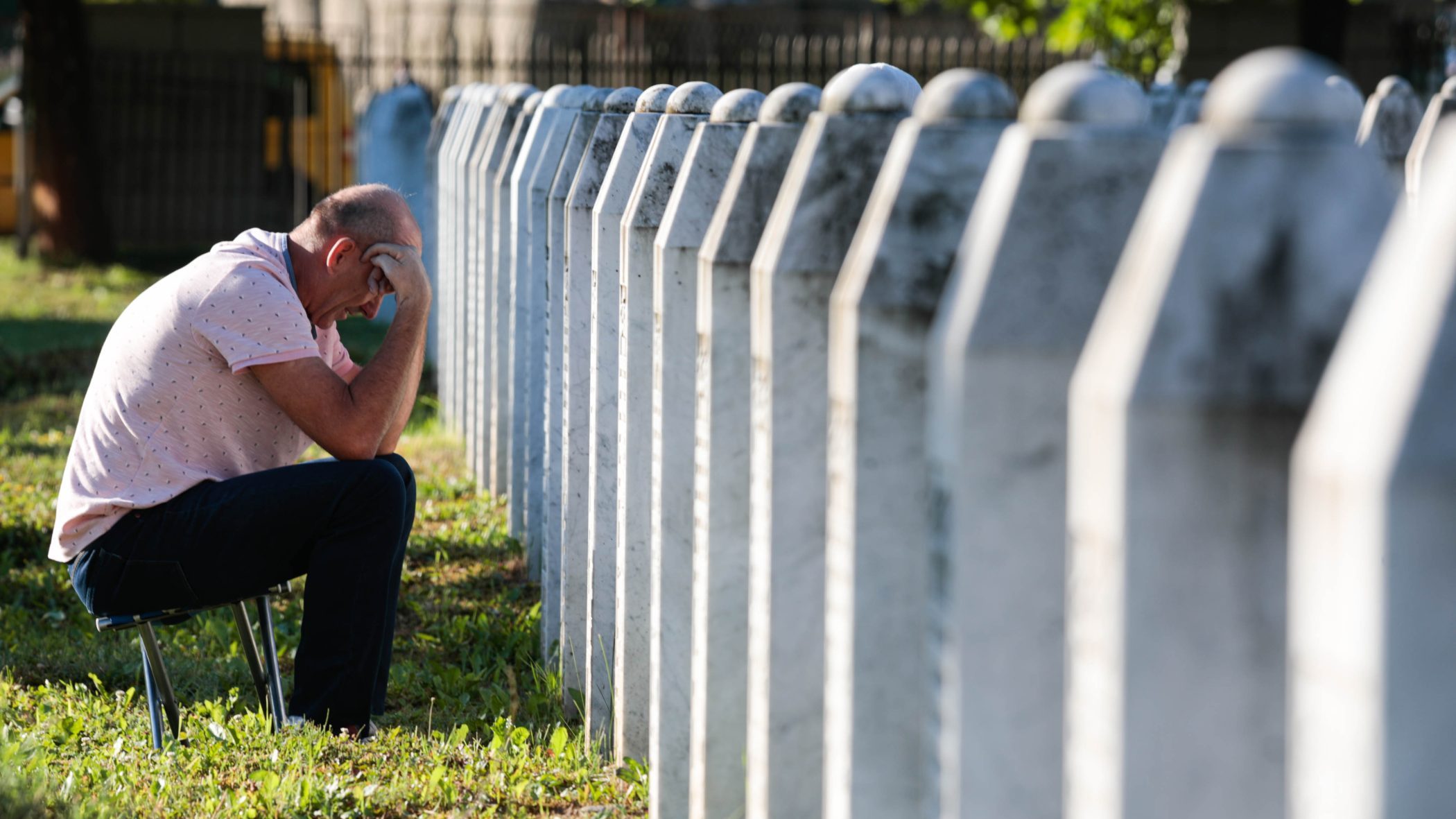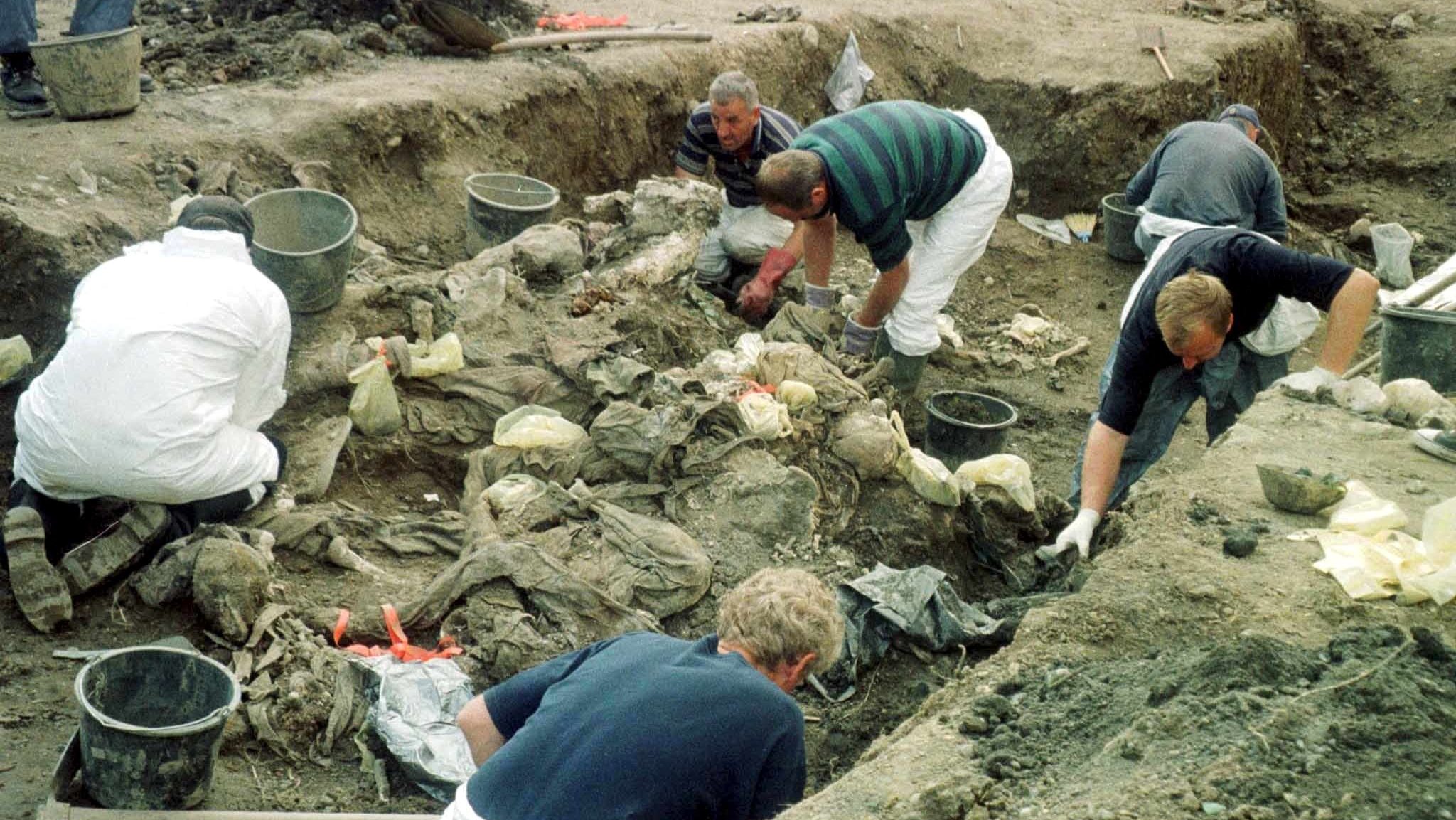This post is also available in: Bosnian
Through its examination of more than 90 witnesses, mostly victims and former members of police and military structures, the State Prosecution has tried to prove that the indictees are responsible for persecution, murder, extermination, deportation, torture and other inhumane acts committed against the non-Serb population in Kljuc in 1992.
At the very end of the evidence presentation process, the Court of Bosnia and Herzegovina rendered a decision to discontinue the trial against Vinko Kondic, former Chief of the Public Safety Station in Kljuc, because his health state had significantly deteriorated, and separated his case from the case against the two other indictees.
Kondic suffers from Parkinson’s disease. He failed to attend hearings on several occasions because of the illness before the trial against him was eventually discontinued.
The trial of Lukic and Adamovic, however, continues. The indictees’ defence teams are due to begin presenting evidence on October 25.
Lukic, former Commander of the Territorial Defence Headquarters in Kljuc municipality and member of the Town Defence Command, and Adamovic, former Commander of the Town Defence Command and Deputy Commander of the Kljuc Battalion, are charged with committing crimes against humanity.
Testifying about the crimes committed in Kljuc in 1992, some Prosecution witnesses said the Crisis Committee and its members were considered most responsible for the crimes committed against civilians.
“The function of the Crisis Committee was to protect the Serb people. The Committee had everything under its control. It was formed by the Serbian Democratic Party in 1991. Its members included Vinko Kondic and Bosko Lukic,” witness Safet Muratagic said.
Witness Muhamed Filipovic recalled having been detained in various detention camps in Kljuc. He said that members of the Crisis Committee could do “whatever they wanted” in 1992, adding he considered them “responsible for the murder of 800 Kljuc residents” committed in that same year.
The Prosecution considers that the indictees participated in a joint criminal enterprise with the aim of taking control of Kljuc municipality and turning it into “a Serb municipality”.
The indictment alleges that members of the Army and police, who were under the control of Lukic and Adamovic, participated in the arrests and detention of civilians at the Public Safety Station premises and the Nikola Mackic school building in Kljuc, as well as the former railway station and school building in Sitnica from May 27 to the end of August 1992.
In their testimonies many witnesses, including victims, described the physical and mental abuse inflicted on civilians in those buildings and their detention in Stara Gradiska and Manjaca detention camps.
“Muslims were in an unpleasant situation at the time. Murders were committed as well. People belonging to the same religious group as you were killed, but you could not do anything about it,” Mile Radulovic, former member of the Public Safety Station in Kljuc, said.
Eyewitnesses to Murders
Witness Kana Mesic from Prhovo village told the Court that “Serb soldiers”, led by Marko Adamovic, whom she recognised in the courtroom, came to her village in June 1992 and killed her 19-year-old son, Isak.
“The soldiers mistreated and beat men. They singled out my Isak from the rest of the men. I covered my ears as I could not listen to him crying.
“Marko then ordered his men to single out five young men and kill them, because members of ‘the Green Berets’ had allegedly not surrendered. My Iso was among the men they singled out and killed in front of our eyes,” Mesic recalled, adding that Adamovic then said: “May they rest in peace”.
The indictment alleges that members of the Bosnian Serb army killed at least seven people in Prhovo village on June 1, 1992. They allegedly singled out 15 men from a group of village residents and took them towards Peci village.
On their way to the village, they killed a certain number of men, handing over the others to policemen, who then detained them in a school building in Kljuc.
The Prosecution alleges that on the same day members of military police forces invited men from Velagici village to come to a checkpoint, detaining those who responded to their invitation in an old school building.
They then allegedly took more than 70 people from the school building and killed them.
Marinko Miljevic, former member of the Military Police Unit, spoke about this crime, saying that the men who were held in the school building in Velagici were “simply killed”.
“In the evening hours buses came to drive the men to Kljuc. When they were taken out of the school building, a blonde, bearded man, whose name I cannot recall, simply killed them.
“Before that, two men, known as Godfathers, questioned and killed a few people,” said Miljevic, adding that “two trucks and a dredger” came and drove the bodies “towards Laniste”.
Prosecution witnesses spoke about the indictees’ participation in certain events. Jusuf Omerovic argued that Kondic and Lukic were responsible for the fact that he spent 17 months in “various death camps controlled by Serb authorities”.
“In late May 1992 all the male residents of my village, Crljeni, were hiding in the woods. (…) They called to us to come out, telling us that Kondic and Lukic guaranteed that no harm would be done to us. I spent 17 months in hellish detention camps because I believed them,” Omerovic said.
This witness said that the Bosniaks, who were arrested “as per orders issued by Bosko Lukic, Chief of the Territorial Defence Headquarters”, were transferred to a school building in Kljuc and then to another school building in Sitnica, where Omerovic recognised Lako Anicic.
Anicic, a former member of the PSS in Kljuc, also testified before the Court of Bosnia and Herzegovina and said that Bosniaks were transferred from the school building to Manjaca a few days later.
“At the beginning of June 1992 Chief Vinko told me to go to the school building in Sitnica in order to prepare it to house Muslims. Our task was to guard them in the school building. I heard that some of them were hiding in the woods, so I guessed this was why they brought them to the building,” Anicic said.
The indictment alleges that one of the most large-scale murders in the Kljuc area took place in Biljani village on July 10, 1992, when “Serb soldiers, supported by policemen”, killed more than 200 civilians. On that day Semso Dzaferagic lost seven family members.
“As soon as we left the school building, I knew what had happened… I knew because they did not come to meet us. Some women said it was impossible to get close to my house as there were so many corpses around it.
“Muhiba Dzaferagic told me: ‘They are gone. All of them were killed up there’. I had no more questions for her,” said Dzaferagic, who found the remains of his family members in the “Laniste 1” mass grave after the end of the war.
“My five-month old child was wrapped in a blanket and glued to an old man. I recognised my wife by her ring… it was not difficult to identify them,” the witness said.
The indictment alleges that the remains of civilians from Kljuc area were found in “Laniste I and II”, “Crvena zemlja”, “Bunarevi I”, ”Ciganska dolina” and other mass graves.
The indictees were arrested in March 2008. Lukic has been held in custody since then. Adamovic has defended himself while at liberty under prohibiting measures since February 2009.
Aida Alic is a journalist with BIRN – Justice Report. Justice Report is one of BIRN’s weekly online publications.


